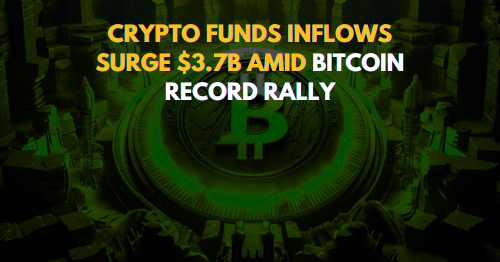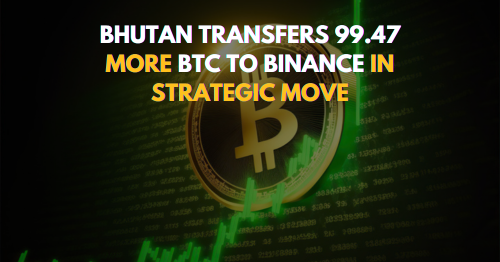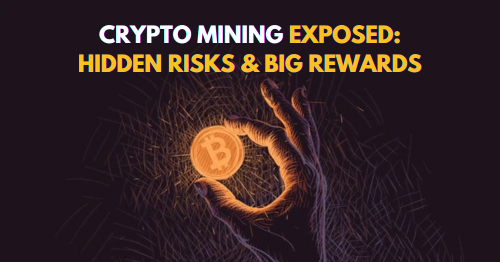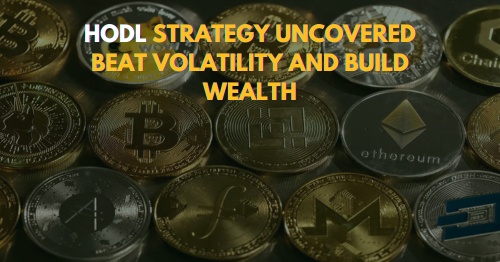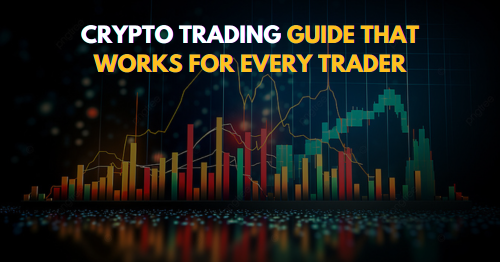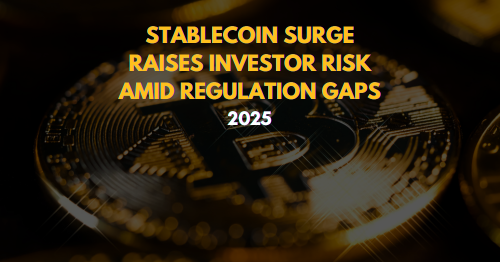
Stablecoin Surge Raises Investor Risk Amid Regulation Gaps
Stablecoin Surge Raises Investor Risk Amid Regulation Gaps. As stablecoins gain prominence in global financial markets, experts warn that their unregulated expansion could pose significant legal and financial threats to investors.
The evolution of digital currencies has transformed how individuals and institutions conduct transactions. At the center of this shift are stablecoins, digital assets pegged to fiat currencies such as the U.S. dollar, that offer relative price stability and liquidity. Their role in facilitating cryptocurrency trading, cross-border payments, and decentralized finance has made them integral to the broader crypto ecosystem.
However, with rising adoption comes growing concern. According to compliance specialists and regulatory authorities, stablecoins are increasingly exploited for illicit purposes including money laundering, fraud, and sanctions evasion. These activities are largely enabled by gaps in international regulation, prompting warnings that investors may unknowingly be exposed to significant legal liabilities and financial losses.
Stablecoins: Innovation Amid Risk
Stablecoins such as Tether (USDT) and USD Coin (USDC) have emerged as the backbone of digital trading infrastructure, with a combined market capitalization exceeding $150 billion as of July 2025. While originally positioned as low-volatility alternatives to other cryptocurrencies, stablecoins are now at the center of regulatory discussions worldwide.
The ability to transfer large sums instantly and without direct oversight appeals not only to legitimate users but also to malicious actors. Investigations by blockchain analytics firms such as Chainalysis have highlighted a year-over-year increase in stablecoin activity linked to high-risk jurisdictions and illicit entities.
“Stablecoins now facilitate a substantial volume of criminal financial flows, often without effective countermeasures,” said a senior compliance officer at a global financial intelligence unit, who requested anonymity due to the sensitivity of the matter.
The TerraUSD Collapse: A Stark Reminder
One of the most notable examples underscoring stablecoin risks remains the TerraUSD (UST) collapse in 2022. Marketed as an algorithmic stablecoin, TerraUSD lost its dollar peg and triggered a loss of over $40 billion in market value within days. The event eroded investor confidence and led to widespread regulatory backlash.
In the aftermath, governments began reevaluating their approach to digital asset oversight. However, despite early momentum, a unified global regulatory framework has yet to emerge, leaving investors vulnerable to similar risks from other projects that lack transparency or legal accountability.
Legal Exposure for Investors
While stablecoins offer speed and efficiency, investors are increasingly subject to legal grey areas, particularly when interacting with platforms or tokens operating outside of regulated environments.
Legal and financial experts outline several key vulnerabilities:
- Asset Seizure: Wallets holding stablecoins involved in flagged transactions may be frozen by exchanges or law enforcement.
- Regulatory Non-Compliance: Holding or using unlicensed stablecoins could violate local financial regulations or international sanctions.
- Lack of Recourse: In cases of depegging or institutional failure, investors may have no legal means to recover their funds.
- Tax and Reporting Errors: Improper documentation of stablecoin transactions may result in audits or penalties from tax authorities.
“Many retail investors assume that stability equals safety. That is a dangerous misconception in an environment lacking clear legal protections,” said Aditi Rao, a digital asset policy analyst with the Blockchain Compliance Institute.
Read All About: Crypto Taxes in India: Save More, Stay Legal
Fragmented Global Response
Efforts to regulate stablecoins are underway in several jurisdictions, but implementation remains inconsistent:
- United States: Draft legislation such as the Clarity for Payment Stablecoins Act aims to introduce audit standards and licensing requirements for issuers.
- European Union: The Markets in Crypto-Assets (MiCA) regulation includes stablecoin governance provisions, though enforcement is still evolving.
- Asia-Pacific: Countries like Japan have introduced formal licensing for stablecoin issuers, while Singapore and South Korea have tightened anti-money laundering compliance.
In contrast, many emerging economies continue to use stablecoins as a hedge against local currency instability, often in regulatory grey zones that lack enforcement infrastructure.
“Absent a coordinated international effort, illicit actors will continue to exploit weaker jurisdictions,” said Marco DeAngelo, a former policy advisor at the U.S. Treasury Department. “This puts all participants, legitimate or otherwise—at elevated risk.”
Institutional Impact and Market Sentiment
For institutional investors, stablecoin exposure carries additional reputational and regulatory implications. Firms managing client funds must conduct heightened due diligence to avoid association with unlicensed issuers or platforms under investigation.
While some institutions have begun limiting exposure to stablecoins lacking transparency, others continue to participate, citing client demand and operational necessity.
Market sentiment remains cautiously optimistic, but confidence depends heavily on the perceived safety of these instruments. Analysts suggest that any major enforcement action—such as the shutdown of a major stablecoin issuer—could significantly disrupt markets and lead to a wave of asset outflows.
What Investors Can Do
In light of these concerns, legal advisors recommend that investors:
- Use Regulated Platforms: Choose exchanges and wallets that implement Know Your Customer (KYC) and Anti-Money Laundering (AML) policies.
- Confirm Reserve Audits: Invest only in stablecoins with verified, transparent, and regularly audited fiat reserves.
- Stay Informed: Monitor news related to crypto legislation, issuer regulation, and high-risk tokens.
- Review Tax Obligations: Maintain clear transaction records for tax reporting and regulatory compliance.
- Avoid High-Risk Jurisdictions: Be cautious when dealing with platforms based in regions lacking formal regulatory frameworks.
Conclusion
As stablecoins continue to shape the future of digital finance, the absence of comprehensive oversight represents a significant risk to both individual and institutional investors. The potential for misuse, coupled with a fragmented regulatory landscape, makes due diligence more critical than ever.
While stablecoins deliver on the promise of efficient, global financial transfer, they are not without consequence. Without effective regulation and investor safeguards, these digital assets may ultimately create more liabilities than value.
Until regulatory clarity is achieved, the prudent investor must balance innovation with caution, recognizing that legal exposure and financial loss are very real risks in today’s evolving digital economy.
🔺 Top 3 Gainers (24h Performance)
- Viction (VIC) – $0.28 (+82.05%)
VIC soared following its recent integration with a popular Web3 ecosystem, drawing increased attention from DeFi enthusiasts and developers. - Tranchess (CHESS) – $0.0699 (+17.85%)
CHESS rallied on renewed interest in yield-enhancing DeFi products and recent updates improving platform staking mechanisms. - Portal (PORTAL) – $0.0431 (+15.20%)
Portal continued its upward momentum fueled by GameFi sector partnerships and growing excitement around cross-chain infrastructure.
🔻 Top 3 Losers (24h Performance)
- FunFair (FUN) – $0.0122 (-11.76%)
FUN faced selling pressure after a sharp decline in daily active users and concerns over stagnating development activity. - SolFarm (SLF) – $0.0655 (-10.15%)
SLF declined amid lower yield farming participation and broader bearish sentiment across DeFi yield aggregators. - Hashflow (HFT) – $0.2165 (-8.69%)
HFT struggled due to a drop in trading volume and investor caution surrounding the token’s recent volatility and unclear roadmap.
I work as a content writer in the blockchain and cryptocurrency domain. I have a keen interest in exploring the world of digital assets, Web3, and emerging crypto technologies. My goal is to provide readers with easy-to-understand, engaging, and trustworthy insights, helping them stay informed and confident in the rapidly evolving world of crypto and blockchain.


